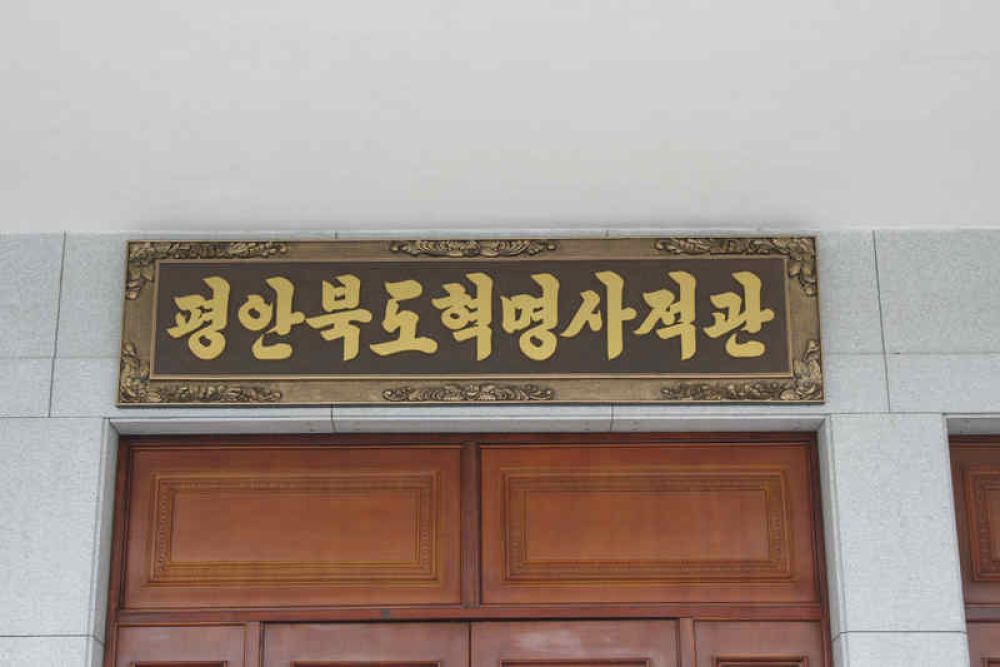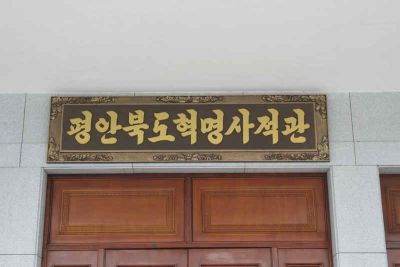

Embark on a journey through North Korean history with a guided tour of the Sinuiju Revolutionary Museum. This museum is dedicated to the anti-Japanese revolutionary struggle and the history of the Workers' Party of Korea. As you move through the museum's halls, you will encounter a wide range of exhibits, including historical documents, personal belongings of key figures in North Korean history, and wartime relics. Your guide, likely well-versed in the country's revolutionary narrative, will provide detailed explanations of the artifacts and their significance to North Korean identity. The tour usually includes a visit to rooms dedicated to the activities of Kim Il-sung, the nation's founding leader, and other revolutionary leaders. You'll gain insight into North Korea's perspective on its history and the importance placed on its leaders.
The Korean War exhibit at the Sinuiju Revolutionary Museum provides an in-depth look at one of the most defining events in North Korea's modern history. Through a mixture of dioramas, archival footage, and photographs, visitors gain a unique lens on the conflict known in North Korea as the 'Fatherland Liberation War.' The displays aim to narrate the North Korean experience and viewpoint of the war, emphasizing the resilience and heroism of the Korean People's Army against foreign invaders. While some perspectives and accounts may be influenced by state narratives, the exhibit offers an opportunity to understand the war's profound impact on the nation's collective memory and identity. The collection of relics and personal items belonging to soldiers and civilians provides a poignant connection to those who lived through the period.
The Hall of Revolutionary Martyrs within the Sinuiju Revolutionary Museum is a solemn space dedicated to those who sacrificed their lives for the North Korean revolution. This area of the museum is a testament to the individuals who fought against Japanese colonial rule and later in various struggles leading up to and including the Korean War. Visitors will find portraits, biographies, and personal items of revolutionary martyrs, presented in a manner that seeks to immortalize their heroism and the ultimate price they paid for their cause. The hall also serves to educate and inculcate visitors, especially the youth, with a sense of pride in their country's past and the continued importance of sacrifice and loyalty to the state.
The Room of Gifts to the Leaders is an exhibition that showcases the various presents given to North Korean leaders from dignitaries, organizations, and individuals from around the world. These gifts to Kim Il-sung, Kim Jong-il, and other high-ranking North Korean figures are meant to symbolize friendship, respect, and political alliances. Ranging from elaborate works of art to simple mementos, each gift tells a story of international relations and the persona of the leaders as constructed by North Korean state narratives. Visitors are often intrigued by the diversity and opulence of some gifts, which can include anything from golden swords to luxury vehicles, providing a fascinating look at the intersection of diplomacy, politics, and personality cults.
At the Sinuiju Revolutionary Museum, visitors can also watch a series of state-produced films that constitute an integral part of North Korean propaganda. These films often portray the nation's history from a perspective that highlights the leadership's roles in building what is presented as a successful, self-reliant socialist state. The narratives usually depict the leaders as heroic, infallible, and adored by the people. Viewing these films provides insight into the methods used by North Korea to shape public opinion and the depiction of the country's history and policies. While the content is heavily curated and may not reflect an objective account, understanding this form of media is important for those interested in the mechanisms of North Korean statecraft and ideology.
Delve into the visual world of North Korean art with a visit to the museum's Art Exhibition of Revolutionary Themes. The artworks displayed here often consist of paintings, posters, and sculptures that reinforce the narratives of struggle and victory in the country's revolutionary and wartime past. Many pieces depict scenes of heroic acts, idyllic landscapes symbolizing prosperity, and portraits of leaders illuminated in a divine-like manner. Visitors will notice that the art serves not only as an aesthetic experience but also as an ideological tool to convey the state's values. This exhibition offers a distinctive opportunity to appreciate North Korean artistry and understand how art intertwines with political messages and cultural education.
The Children's Revolutionary Education Room is a space designed to engage the younger generation with North Korea's revolutionary history. Interactive displays, educational games, and child-friendly exhibits help to instill a sense of national pride and awareness of the country's historic struggles. Exhibits often include stories of the Kim family and other revolutionary figures, portraying them as role models for children to emulate. The activities in this room are tailored to be approachable for children, ensuring that the lessons of loyalty, bravery, and patriotism are absorbed in an engaging manner. Visiting this section of the museum can be especially enlightening for those looking to understand how North Korean history and ideology are taught to the youngest citizens.
The Sinuiju Revolutionary Museum offers an Outdoor Revolutionary Relics Exhibition where visitors can explore a collection of historical items displayed in an open-air setting. This area typically includes military hardware such as tanks, aircraft, and artillery pieces used during the anti-Japanese struggles and the Korean War. Accompanying plaques and guides provide context to the role each relic played in North Korea's fight for independence and self-determination. Walking among these larger-than-life pieces of history allows visitors to contemplate the scale of the military efforts and the resources mobilized to achieve the nation's revolutionary goals.
The Study Session on Juche Ideology is an activity within the Sinuiju Revolutionary Museum that delves into North Korea's prevailing political philosophy. Juche, often translated as 'self-reliance,' is the guiding principle of North Korea's social, economic, and political policies, developed by Kim Il-sung. The study session, usually led by a knowledgeable museum guide or educator, explores the tenets of Juche and its application in North Korean society. Participants have the chance to discuss the concepts of political independence, economic self-sustenance, and military self-reliance that are central to the ideology. This activity can be especially compelling for those who have a deep interest in political philosophy or who wish to understand the ideological underpinnings of the North Korean state.
For historians and researchers, the Sinuiju Revolutionary Museum offers limited access to archival materials related to the revolutionary history of North Korea. This is a rare opportunity to examine documents, photos, and personal writings that provide insight into the nation's past, albeit from the North Korean perspective. While access is highly regulated and subject to prior approval, those granted permission can delve into materials that are otherwise not easily accessible. It's a valuable activity for anyone conducting research on North Korean history, the anti-Japanese struggle, or the Korean War, offering a first-hand look at resources curated by the state for their historical narrative.
